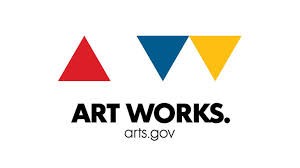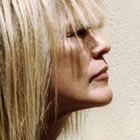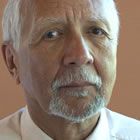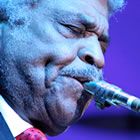I’m pleased to have interviewed Ann Meier Baker, who was appointed last October as the National Endowment for the Arts’ director of Music and Opera – a position that includes responsibilities for the U.S.’s federal support of jazz, such as the induction of NEA Jazz Masters, celebrated with a live-streamed concert at Jazz at Lincoln Center on April 20.
Ms. Baker follows Wayne Brown, who left the Endowment after 16 years to become president and CEO of the Michigan Opera Theatre in Detroit, Michigan. She took up her post in January 2015, arriving from Chorus America, where she’d been president and CEO;  before that she was founding director of National School Boards Association Foundation. She began her professional career as a member of the United States Air Force Singing Sergeants. She’s a relative newcomer to jazz, but has eagerly dived in. The following interview has been lightly edited for clarity.
HM: Have there been any articles about you since your appointment to the National Endowment for the Arts?
AMB: There were a few before I arrived, and since then I don’t think any. You are the first.
HM: That makes me happy. May I ask: What is within your job’s purview?
AMB: I have a broad portfolio, my area being music and opera. In the music categories that includes jazz, orchestra, chamber music — a real variety of genres – as well as opera. So the sphere that I’m working in is exciting and quite wide-ranging.
HM: And how does the NEA’s music program support this world of music?
AMB: The NEA’s grants go to organizations. Organizations put forward projects, applying for the grants we offer, and we consider those. We also work with a number of service organizations that have perspectives and suggestions about what kinds of organizational support their genres need, so we solicit information and make decisions about programming that might be supported on the basis of it.
HM: The jazz world no longer has a service organization. Does that put jazz at a disadvantage at the NEA?
AMB: I was sad to see the jazz organization go out of business a few years ago [the International Association for Jazz Education ended its corporate existence in 2009, and the Jazz Alliance International last reported to the IRS in 2006] but I was recently at the Chamber Music America conference, and saw a number of jazz musicians at that conference. So they [CMA] are one of those service organizations, with members doing the great work in the field, and they can point us to that exciting work, as well as serve as a conduit for information we want to share. I know that you’re involved with an association of jazz journalists, so that’s another service organization to the jazz field.
HM: Actually the Jazz Journalists Association is a service organization for people in media, doing journalism, rather than for jazz creation or presentation itself. Of course, we do believe in supporting what’s good for jazz and help to connect the dots as much as possible.
AMB: So yes, your organization has an important place in effort to unify the field.
HM: At one point there was NEA support for arts journalists, with institutes for classical music critics, dance and I think theater critics, too.
AMB: Yes, and I believe there was also program that addressed the critical field widely [in 2014 NEA supported arts journalism through four grants presented through its initiative Art Works].
 HM: The NEA’s grants to individuals in the 1980s, which were project-based, were very productive. Is there any thought of reinstating such grants?
HM: The NEA’s grants to individuals in the 1980s, which were project-based, were very productive. Is there any thought of reinstating such grants?
AMB: Reinstating grants for individual artists would have to be congressionally mandated.
HM: Have you seen any shifts of emphasis at the NEA in the time you’ve been there?
AMB: Well, there’s been no shift in my first two months of work, but I’ve seen a lot of exciting projects funded through the grants program. A couple which come to the top of my mind are the American Jazz Museum in Kansas City to support the 18th and Vine Jazz and Blues Festival, which will shine a light on Jazz Master Ramsey Lewis, and one for the Eugene Symphony for a residency of Jazz Master Branford Marsalis, which includes a lot of jazz education-related programs, so there’s a wide range of opportunities for students there. [To see other relevant NEA grants, go to https://apps.nea.gov/grantsearch/ and fill in keyword “jazz”]
And the biggest focus of my attentions coming into the position has been the NEA’s Jazz Masters program, taking place on April 20. We have four new Jazz Masters — Carla Bley, George Coleman, Charles Lloyd and club-owner Joe Segal, who I bet you as a Chicagoan know a lot about.
HM: Yes, I do. Joe Segal was the first person to ever let me into a jazz show for free, when I was a teenager. He always encouraged me in my jazz interests, and I spent a lot of time at his Modern Jazz Showcase in its various locations.
AMB: We’re going to present a ceremony of 90 minutes at Jazz at Lincoln Center, including music, some of which will be by these masters.
HM: Is Carla Bley bringing her orchestra?
AMB: No, but we’ll have an excellent house band and there are special players all lined up.
I think it will be an extraordinary concert. I was amazed and pleased to learn that last year’s NEA Jazz Masters concert was streamed 30,000 times, in 102 different countries. As in the past, there will be video tributes to the Masters during the ceremony, which will live on the NEA’s website for general access after the event is over. Prior to the event, in the afternoon leading up to it, we’ll have a luncheon for the Masters which will also include a lot of the formerly named Masters, which gives us an opportunity to knit their community together. We feel that’s important. I’m eager to meet these talented men and women, all in one place.
HM: I saw a movement recently on Facebook, actually started by a member of the Jazz Journalists Association, noting that there haven’t been a large proportion of women recognized as Masters, and urging that people bombard the NEA with nominations of women.
AMB: Nominations for the Jazz Masters honor come from the public and the jazz community, so please do that – bombard away!
HM: How has your background prepared you for your NEA position?
AMB: Most of my career has been with national organizations in the arts, with a little hiatus to work with an educational organization for a few years. I started as a singer, then was associated with the League of American Orchestras, and since that time I’ve worked with different organizations across different disciplines. You’re talking to a person who is an expert in getting advice, learning and putting together initiatives that can advance the mission of whatever organization I’m working with.
As far as the specifics of jazz go, I’m still learning but I’ve immersed myself in this music, and I’m having such fun getting up to speed.
HM: Have you had much previous contact with jazz?
AMB: Well, my earliest introduction to jazz was through a neighbor, Joel Siegel, who was manager of Shirley Horn. No, not the television movie critic, although this Joel Siegel reviewed films, too, I think for Washington City Paper. He lived nearby, and used to invite me to dinner parties where jazz musicians would be among the guests. That was wonderful.
HM: Do you think there’s anything about jazz that distinguishes its challenges or circumstances from the other disciplines in your portfolio?
AMB: Having to knit together career by playing in many different ensembles is certainly one of the things that creates pressures much different than those common in the life of a symphony musician or other kind of musician. The jazz business model has been different over the years, and has undergone a lot of change recently. We’re hearing from jazz musicians that touring opportunities aren’t what they used to be, and that so many people self-manage now that they’re spending time doing things like booking, self-promotion, dealing with touring and maybe recording logistics that it makes it hard to find the time to actually work on the music itself.
HM: Have you been to the Jazz Masters events before? And do you think the Jazz Masters program as it’s presently constituted gets the most bang that’s possible from the ceremony and awards?
AMB: This is first time I’ve been live in the room at a Jazz Masters concert. I’ve watched the previous streams, though. My personality is such that I always want what I’m engaged in to have more impact. I’ll be attending on April 20 with that in mind. We really want to get every inch of value out of this program. Besides the pleasure of the NEA having a relationship with Jazz at Lincoln Center that allows this kind of concert to happen, I enjoy the fact that there have been 136 Jazz Master awards presented over the past 33 years. The program has touched on, has acknowledged, an impressive number of people, and I think all the work has been done so far is great.
HM: Is it unusual for the NEA to have such a relationship with Jazz at Lincoln Center, which after all might itself be applying for funding? And does the Jazz Masters program being at Lincoln Center again reinforce the notion that New York City is the capitol of jazz?
AMB: The NEA has a lot of cooperative agreements with organizations that partner with us. We are enriched by working with partners who can expand our impact in various ways. When you see the list of different grants the NEA has provided, I think you’ll notice a broad range of geographic localities that we’ve reached. It’s true, there’s great jazz happening everywhere. The city limits of New York City do not represent the border of jazz. As far as outreach of the Masters program goes, the diversity of the Masters themselves and the webcast help us. It doesn’t matter where you live, you can tune in to enjoy the webcast. But I’ll also mention that the 2016 concert will be in Washington, D.C. For the 50th anniversary of the NEA, we’re trying to put as much spotlight on the agency’s work in the nation’s capitol, right here, as we possibly can.
HM: The Jazz Masters ceremony being moved to April, from January – was that to take advantage of Jazz Appreciation Month?
AMB: Yes. I was at the kickoff of JAM at the Smithsonian’s National Museum of American History just the other night, and enjoyed it very much. We moved our concert to April not only because of the weather in New York in January always jeopardizes transportation, but more so because we want to extend the visibility of jazz during JAM. The 2016 Jazz Masters ceremony will be in April, as well.
HM: Is there anything you’d like to say that I haven’t asked you about?
AMB: That’s a good question. I just want to say that I’m tickled to be in a position where I can contribute to the jazz in this country, and jazz to come – I have a big appetite for being as contributive as possible to our culture, in which jazz is so deeply embedded. I recently heard Jason Moran do his tribute to Thelonious Monk at the Kennedy Center, which he ended by walking through the audience, and his band following him, forming a circle, jamming in the midst of the crowd. I was thinking ‘Wow, how lucky am I that I can contribute to what’s going on here.’ I’ve heard Wynton Marsalis, I’m a big fan of Esperanza Spalding – there are many players now doing so much good work . . .
I don’t know if this has been the practice in the past, but I consider myself one of the most consultative people on the planet. You can count on the fact that I will ask you for ideas and recommendations, too. We have peer review panels, and jazz leaders are invited to be part of them. I anticipate crossing paths with a lot of people doing the real thing, making jazz itself.
I’ve been a music education director, though that’s not the hat I wear here at the NEA. I was raised by a public school music teacher who thought music was good for you, and a lot of music is great for you. I grew up in a noisy household with my mom teaching music and my dad an elementary school principal. Every conversation at our dinner table was about the arts and education – concerning urban schools in particular — so these kinds of concerns are in my DNA.
I’m sorry you won’t be able to attend the Jazz Masters concert, but I hope you’ll be watching it online.
HM: Oh yes, I will be. I may even live tweet it.
AMB: That would be grand. The hashtag is #NEAjazz15.
[contextly_auto_sidebar id=”AIFiv0yu65cmEKQdHOBxovZtCjoq2r2R”]






